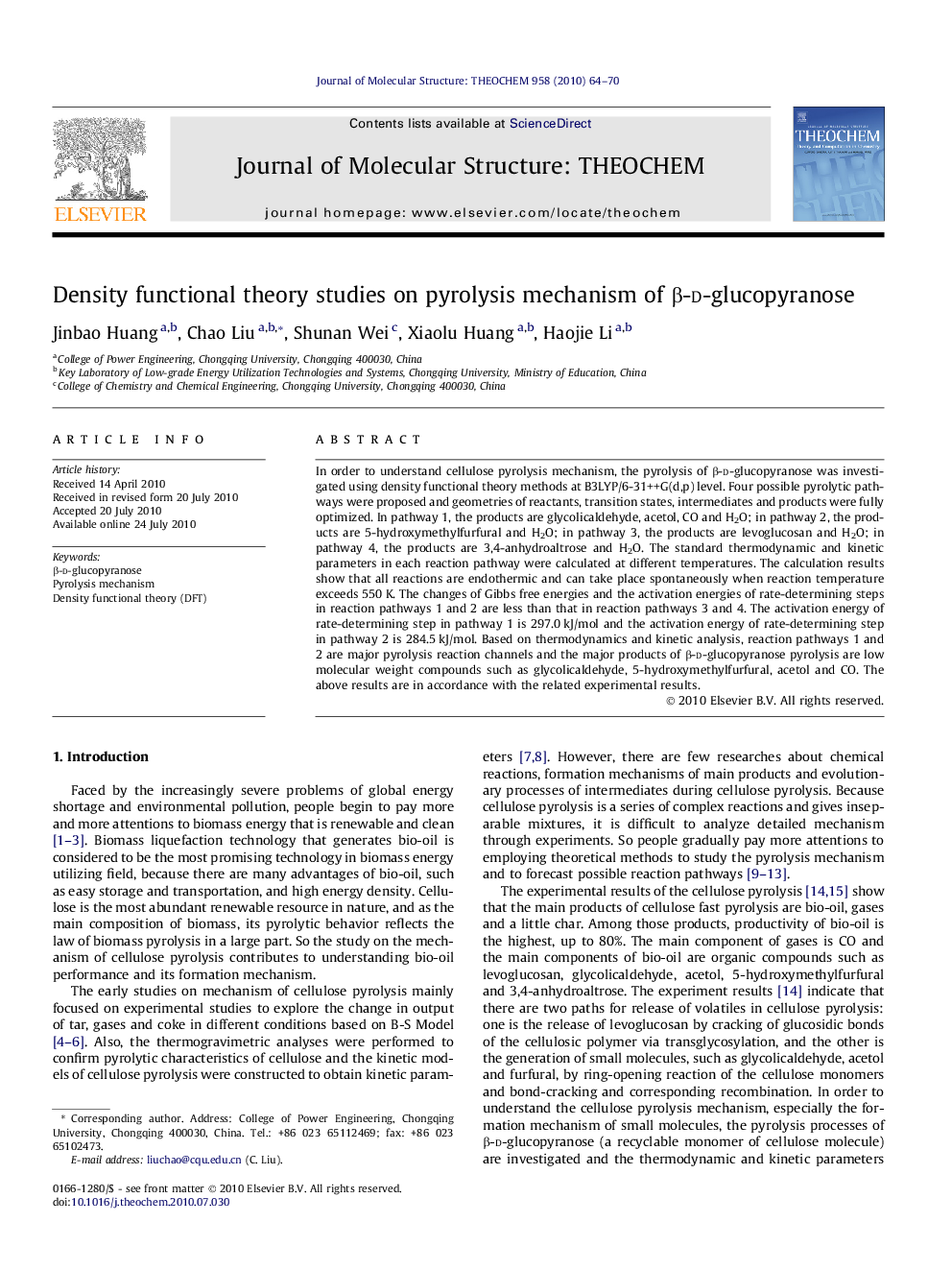| Article ID | Journal | Published Year | Pages | File Type |
|---|---|---|---|---|
| 5416375 | Journal of Molecular Structure: THEOCHEM | 2010 | 7 Pages |
Abstract
In order to understand cellulose pyrolysis mechanism, the pyrolysis of β-d-glucopyranose was investigated using density functional theory methods at B3LYP/6-31++G(d,p) level. Four possible pyrolytic pathways were proposed and geometries of reactants, transition states, intermediates and products were fully optimized. In pathway 1, the products are glycolicaldehyde, acetol, CO and H2O; in pathway 2, the products are 5-hydroxymethylfurfural and H2O; in pathway 3, the products are levoglucosan and H2O; in pathway 4, the products are 3,4-anhydroaltrose and H2O. The standard thermodynamic and kinetic parameters in each reaction pathway were calculated at different temperatures. The calculation results show that all reactions are endothermic and can take place spontaneously when reaction temperature exceeds 550 K. The changes of Gibbs free energies and the activation energies of rate-determining steps in reaction pathways 1 and 2 are less than that in reaction pathways 3 and 4. The activation energy of rate-determining step in pathway 1 is 297.0 kJ/mol and the activation energy of rate-determining step in pathway 2 is 284.5 kJ/mol. Based on thermodynamics and kinetic analysis, reaction pathways 1 and 2 are major pyrolysis reaction channels and the major products of β-d-glucopyranose pyrolysis are low molecular weight compounds such as glycolicaldehyde, 5-hydroxymethylfurfural, acetol and CO. The above results are in accordance with the related experimental results.
Related Topics
Physical Sciences and Engineering
Chemistry
Physical and Theoretical Chemistry
Authors
Jinbao Huang, Chao Liu, Shunan Wei, Xiaolu Huang, Haojie Li,
